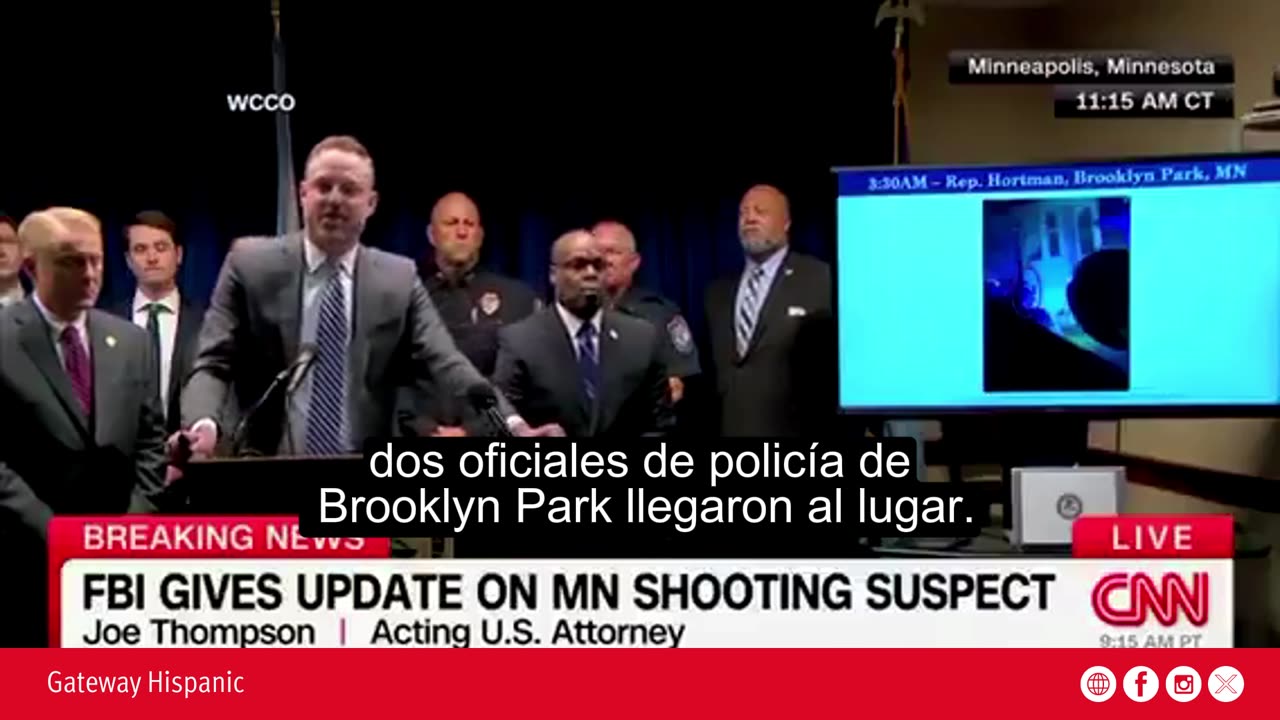Premium Only Content

Deadly Attack in Minnesota Exposes Major National Security Failure
What began as a quiet night in the suburbs of Brooklyn Park ended in tragedy that shook the state of Minnesota—and the entire country. At approximately 3:00 a.m., a heavily armed man dressed as a police officer coldly murdered State Representative Melissa Hortman and her husband Mark Hortman, in an act that combined military-level planning, political hatred, and a catastrophic failure of the security system.
The attacker, identified as Boelter, arrived in a black SUV with police plates and flashing emergency lights. He wore a tactical vest, hyper-realistic mask, body armor, and carried a flashlight and a loaded 9mm Beretta pistol. His objective was clear—and what he did inside the home was devastating.
Impersonating Authority: A New Threat
Boelter’s level of preparation leaves no room for doubt: this was a premeditated assassination. What sets this attack apart from others is the way the assailant manipulated public trust in law enforcement. He didn’t just use the symbols of the State—he impersonated the State itself to commit murder.
This growing trend—where criminals or extremists pose as officers to carry out violent acts—represents a new and deeply alarming level of domestic threat. It is also a wake-up call for lawmakers on both sides of the aisle: the illegal use of police plates, tactical gear, and weapons of war can no longer be treated as a minor offense.
A Delayed Response and Systemic Failure
Boelter was intercepted by two officers from the Brooklyn Park Police Department, alerted after a prior shooting targeting a state senator (whose name has not yet been released). Despite their swift response, it was not enough. Upon arrival, the officers found the SUV parked in front of the house with its lights still flashing. Boelter was already at the doorstep. He drew his weapon, opened fire, and then stormed through the front door, shooting inside the home.
The outcome: two lives lost. Representative Melissa Hortman, who had served in the state legislature for over a decade, and her husband Mark. A calculated, frontal attack—with no mercy.
Although officers fired at Boelter as he fled, the suspect managed to escape through the back of the house. Behind the property, authorities recovered his Beretta pistol, body armor, and mask. Inside his SUV, investigators found a chilling arsenal: five additional firearms, including assault-style rifles, hundreds of rounds of ammunition, and notebooks containing a hit list of over 45 Minnesota state and federal officials. Representative Hortman was among the names listed.
Domestic Terrorism or Institutional Collapse?
The discovery of a detailed list of political targets elevates this case to a new category: domestic terrorism. This was not just a lone killer. This was a direct attack on democratic governance, and more specifically, on elected public servants.
One must ask: how did someone acquire police tactical gear, fake license plates, multiple high-powered weapons, and plan a massacre of this scale without triggering prior alarms? Where did the state and federal intelligence apparatus fail? And how many more like Boelter are still out there—waiting to strike?
Hortman's Legacy Should Not Be Exploited to Justify Civilian Disarmament
From progressive sectors, we are already hearing the usual calls: more gun control, more restrictions, fewer rights for law-abiding citizens. But the problem here is not the legally armed citizen. The problem is the lack of oversight over individuals who impersonate law enforcement, arm themselves illegally, and plan ideological attacks against government institutions.
The solution is not to disarm the public—but to better protect elected officials, to identify radicalized individuals early, and to crack down immediately on the trafficking and impersonation of police authority, an issue that has been overlooked for far too long.
Conclusion: Protecting the Country from Within
This attack marks a turning point. It’s no longer enough to talk about border security or strengthening law enforcement abroad. The enemy can also be within—disguised, armed, and driven by a twisted mission.
The United States needs more surveillance, more tactical intelligence, and far less complacency. Today it was Minnesota. Tomorrow, it could be any other state, any other representative, any other family.
President Trump’s administration has reiterated its commitment to domestic security as a national priority. This case only reinforces the fact that the threat does not always come from abroad—and that the State must respond with strength, determination, and prevention.
-
 LIVE
LIVE
Lofi Girl
2 years agoSynthwave Radio 🌌 - beats to chill/game to
257 watching -
 42:55
42:55
Stephen Gardner
1 day ago🔥Trump’s SURPRISE Move STUNS Everyone - Democrats PANIC!
102K122 -
 1:37:19
1:37:19
Badlands Media
16 hours agoBaseless Conspiracies Ep. 148: The Delphi Murders – Secrets, Setups, and Cover-Ups
47.1K17 -
 5:59:05
5:59:05
SpartakusLIVE
10 hours ago#1 MACHINE Never Stops The GRIND || LAST Stream UNTIL Friday
152K2 -
 28:36
28:36
Afshin Rattansi's Going Underground
1 day agoDoug Bandow: ENORMOUS DAMAGE Done to US’ Reputation Over Gaza, Trump ‘Easily Manipulated’ by Israel
33.4K32 -
 2:45:13
2:45:13
Barry Cunningham
17 hours agoCBS CAUGHT AGAIN! CHICAGO A MESS! LISA COOK IS COOKED AND MORE LABOR DAY NEWS!
122K51 -
 6:39:17
6:39:17
StevieTLIVE
11 hours agoMASSIVE Warzone Wins on Labor Day w/ Spartakus
37.9K1 -
 10:46:42
10:46:42
Rallied
17 hours ago $18.70 earnedWarzone Challenges w/ Doc & Bob
204K4 -
 3:26:25
3:26:25
Joe Donuts Live
10 hours ago🟢 Lost in Space with My Clones: The Alters Adventure Begins
40.2K5 -
 7:20:22
7:20:22
Dr Disrespect
19 hours ago🔴LIVE - DR DISRESPECT - TRIPLE THREAT CHALLENGE - WINNING AT EVERYTHING
227K12